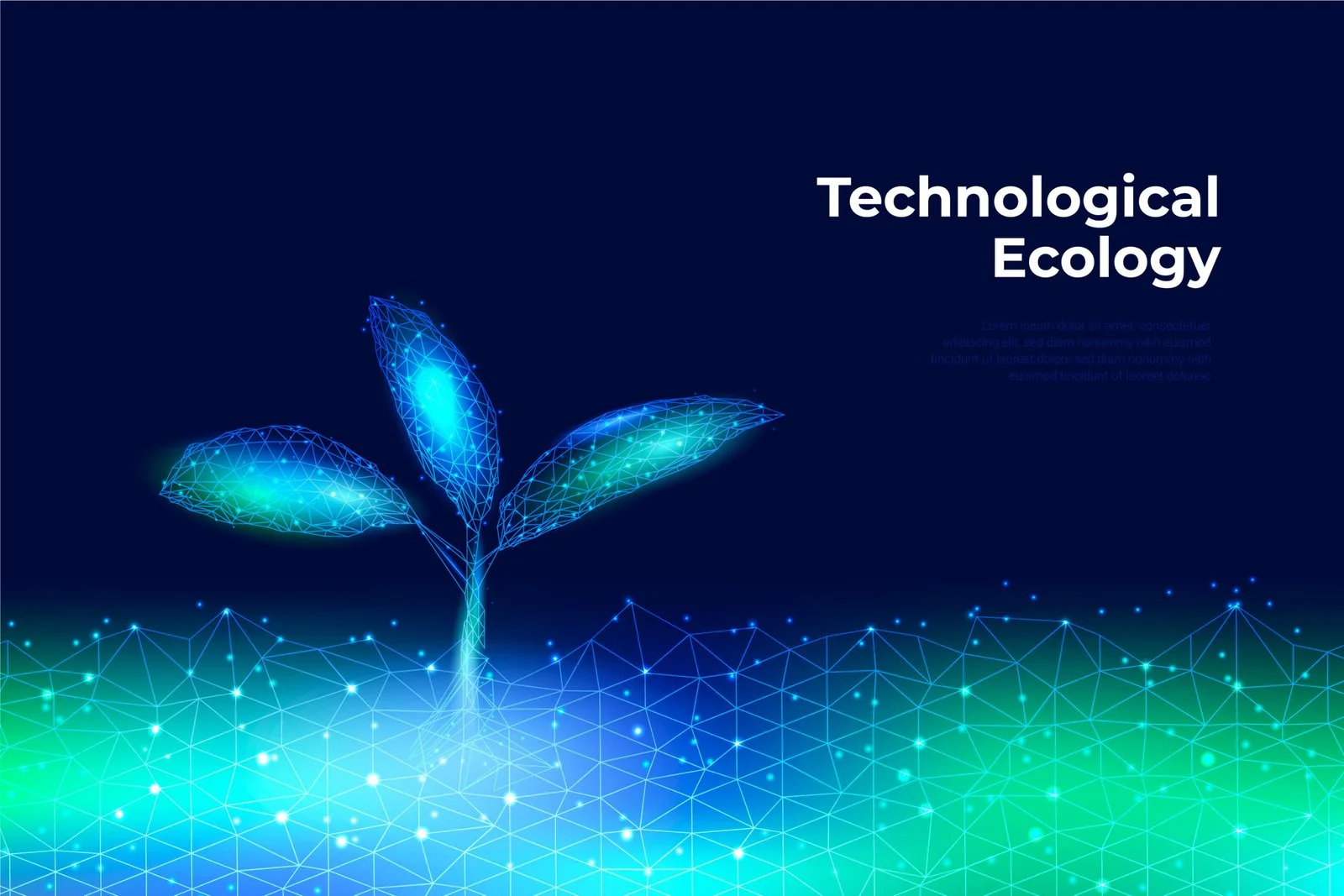
LiFi Technology and its Sustainable Impact on Carbon Footprint Reduction
Discover LiFi in sustainable technology - green innovation reducing carbon footprint and shaping eco-friendly data transfer for the future in connectivity.

LiFi Technology and its Sustainable Impact on Carbon Footprint Reduction
Introduction
As the world continues to take big technological steps, light fidelity technology paces with it. As a form of wireless communication and sustainable tech, light communication is becoming an increasingly feasible and critical solution to the high demand for connectivity. The ever-growing necessity of wireless technology weighs heavy on the environment, as resources for our connectivity are derived from it. Oledcomm promotes the idea that light communication can be developed as a sustainable technology, and that this weighty demand for devices and technology must be mitigated through advanced green technologies like LiFi. In this article, we will explore the broader implications of technology on the environment, delve into how we can reduce the environmental impact of our digital footprint through innovative solutions, and discuss why Light Fidelity is leading as a sustainable technology.
Understanding Sustainable Technology
At its core, sustainable technology encompasses any technological innovation designed to minimize environmental impact, conserve resources, and promote long-term ecological balance.
What is Green Technology? | Definition & Principles
Sustainable (or green) technology is often focused on how to reduce a carbon footprint, and some guiding principles can include resource efficiency, renewable energy, life cycle assessment, localization of resource sources, and circular economy practices.
Image by Freepik
Green Technology Examples
Green technologies have transformative potential, and are guided by a commitment to the preservation of resources in the face of mass consumerism. Essentially, sectors like energy generation, transportation, recycling, and agriculture are already busy with developments of technologies that incorporate sustainable sources of energy, seen in technologies that source solar power and hydropower, for example. Light fidelity technology is to wireless connectivity as solar power is to energy generation, and in its essence, light fidelity technology operates by means of light communication.
LiFi Technology and Sustainability
LiFi, short for Light Fidelity, is a revolutionary wireless communication technology that uses light to transmit data.
Introduction to Li-Fi
Unlike traditional WiFi, which relies on radio waves, LiFi utilizes the visible light spectrum to transmit information from a wireless access point to a device within a certain range. Light fidelity operates on the recently IEEE approved 802.11bb standard, and provides greater security and a faster wireless connection. Essentially, light fidelity technology operates by means of light communication. It turns LED light bulbs into data-transmitting devices, providing high-speed internet connectivity through illumination. LED light bulbs are notoriously efficient, low-maintenance, and long-lasting, making their replacement and disposal rates remarkably low.
Image by Freepik
How does LiFi align with the principles of green and sustainable technology?
Many aspects of light fidelity technology are progressive in the sector of sustainable technology. The use of LED lights, the backbone of LiFi technology, makes it incredibly efficient, as LEDs are renowned for their regulative energy efficiency. Compared to traditional incandescent bulbs, LEDs consume significantly less energy and have a longer lifespan. By integrating LiFi with LED lighting systems, businesses and households can reduce their energy consumption while enjoying high-speed internet connectivity.
LiFi technology is renowned for its interoperability within existing systems. LiFi can leverage existing wireless infrastructure, such as lighting systems, to transmit data. This reduces the need for additional hardware, and minimizes resource consumption and environmental impact. Moreover, LiFi can coexist with other wireless technologies, and be installed with near-seamless integration methods. Utilizing devices liketablets with integrated LiFi capabilitiesand Oledcomm’s LiFiMAX technology can show the interoperability and great potential LiFi systems have on reducing environmental impact.
Impact of Technology on Environment
LiFi, short for Light Fidelity, is a revolutionary wireless communication technology that uses light to transmit data.
Environmental Consequences of Traditional Technologies
The impact of technology on the environment is unavoidable, as the demand for connectivity increases, it’s clear that some aspects of traditional technologies no longer serve the advancing green technology frameworks. While LiFi represents a significant step towards sustainability, it's essential to recognize the broader impacts that technology has on the environment. Some of these aspects include:
-
1. Electromagnetic Pollution:
One of the greatest effects of traditional WiFi technology, which operates on radio frequencies. Unlike WiFi, LiFi operates in the visible light spectrum, meaning it produces no electromagnetic interference and poses no risk to sensitive equipment or human health. By minimizing electromagnetic pollution, LiFi contributes to a cleaner and safer environment.
-
2. Energy Consumption:
One of the greatest effects of traditional WiFi technology, which operates on radio frequencies. Unlike WiFi, LiFi operates in the visible light spectrum, meaning it produces no electromagnetic interference and poses no risk to sensitive equipment or human health. By minimizing electromagnetic pollution, LiFi contributes to a cleaner and safer environment.
-
3. Electronic Waste:
Frequent upgrades and replacements of electronic devices has become the norm in the rapid pace of technological advancement. A massive accumulation of electronic waste containing hazardous materials such as lead, mercury, and cadmium can be the result.
Read more about the details of WiFi vs. LiFihere.
Sustainable Tech Practices for Carbon Footprint Reduction
LiFi's reliance on light waves for data transmission increases its environmental sustainability benefits on many fronts. Integrating LiFi systems into already existing wireless infrastructures will reduce the need for new hardware, thus reducing the use of materials. E-waste, or waste from outdated electronics, is a rapidly growing issue, and it was found that almost 50 million TONS of e-waste is generated each year. By implementing and being aware of local e-waste recycling possibilities and prioritizing a circular economy in regards to wireless infrastructure, technologies can begin to reduce or mitigate the environmental impact and carbon footprint of technological advances. Read more about responsible digital techhere.
Practical Tips for Individuals: Reducing Your Carbon Footprint
The need for sustainable technology solutions is urgent, and as individuals, there is a lot we can do to be aware and vigilant in reducing our environmental impact in our technological advances. It requires informed decisions about efficiency, security, and versatility. As the demand for connectivity and digital services continues to rise, LiFi as a green technology exemplifies the potential innovative technologies have in addressing environmental challenges while delivering tangible benefits in regards to speed and security of connectivity.
-
Choose efficiency:
By leveraging energy-efficient LED light communication and minimizing radio waves and electromagnetic pollution, LiFi offers a more sustainable alternative to traditional wireless technologies.
-
Choose security:
LiFi's inherent security features contribute to data privacy and protection, reducing the risk of environmental and societal harm associated with cyber threats.
-
Choose versatility:
From smart homes and offices to industrial applications, LiFi can be deployed across various sectors to enable sustainable connectivity.
-
Choose collaboration:
The development and adoption of LiFi technology require collaboration among stakeholders, including researchers, policymakers, and industry leaders. By fostering partnerships and sharing best practices, we can accelerate the transition to a more sustainable digital ecosystem.
In Conclusion
We are living through an era that is massively defined by both technological innovation and environmental consciousness.LiFi emerges as a beacon exampleof green technology and sustainable connectivity, and by harnessing the power of light to transmit data, it proves itself as a possible solution to the environmental problems created and posed by the consumption and adherence to traditional wireless technologies. Achieving true sustainability in the digital age requires collective action and continuous innovation, and comes together when individual pieces are working together.
Recent articles

Categories
See some more...






